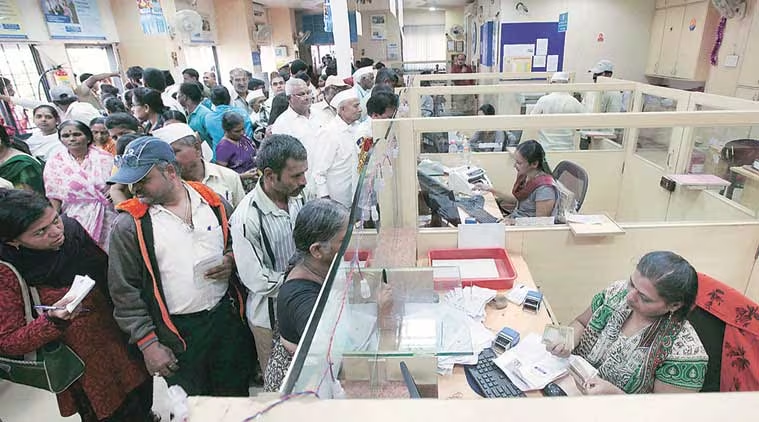
Western world will have to live with high interest rates for now
The Federal Reserve, the central bank of the United States of America, has kept the federal funds interest rate in the range of 5.25 to 5.50 in September 2023. Before this, the Federal Reserve had raised interest rates 11 times consecutively; and interest rate today is the highest ever in the last 22 years. European Central Bank has also decided to keep the key interest rate at 4 percent for October 2023, which had been increasing continuously for the last 10 times and reached this level. It is noteworthy that such high interest rates in America and Europe have never been seen in recent years. High interest rates are making life difficult for people in every sector. The mortgage rate in America has reached 8 percent. The average interest rate on credit cards is 20 percent, the average interest rate on new car loans is 7.62 percent and even the interest rate on federal education loans for students has reached 5.5 percent. Although the US and European Central Banks have signalled some relief by not raising interest rates in October, there seems to be a consensus in official circles and experts that there is no possibility of interest rates being dropping in the near future due to ongoing fuel and food inflation, with no sign of war ending soon.
The policy interest rate is determined by the central bank of that country, like Reserve Bank of India in India, Federal Reserve in USA, Bank of England in England etc. But the determination of interest rate at any time in a country is influenced by the rate of inflation. The policy interest rate is generally called the bank rate. Apart from this, many other versions of it, like Repo Rate, Reverse Report etc. are also announced, bearing different connotations. Broadly speaking, bank rate is the interest rate at which commercial banks of that country can borrow from the central bank. These policy interest rates influence various types of interest rates in the country like interest rates on deposits, interest rates on borrowings etc. If the inflation rate is high and the interest rate is low, then people who have accumulated savings will suffer losses because the real value of their deposits will be depleted. Therefore, according to the principles of economics, the policy interest rate should be higher than the inflation rate, so that real rate of interest is positive, to give real return on deposits and encourage savers. For example, if the inflation rate is 6 percent, then to keep the real interest rate at 2 percent, the interest rate on deposits should be at least 8 percent. Therefore, as inflation increases, it becomes imperative to increase the policy interest rates. On the one hand, there are no signs of inflation coming down, and fears of recession are increasing in countries around the world. Due to increase in interest rates, not only the demand for houses and cars can be affected, many other types of demand may also shrink. There is a possibility that the purchase of household goods will also be affected due to increase in interest rates on credit cards. While investment efforts in infrastructure, especially road infrastructure, were gaining momentum in the US, rising interest rates could depress that too. In such a situation, recession is knocking in these countries.
Developing countries are also not untouched by inflation and increase in interest rates. Both food inflation and fuel inflation are also affecting developing countries, due to which the inflation rate remains high there too. Therefore, the central banks of developing countries have also been continuously increasing the policy interest rates (Bank Rate, Repo Rate etc.). Among BRICS countries, this rate is 12.75 percent in Brazil, 8.25 percent in South Africa, 15 percent in Russia, 3.45 percent in China and 6.5 percent in India. Among other developing countries, it is 6.0 percent in Indonesia and 11.25 percent in Mexico. It is true that India is also not untouched by world inflation, but still India is the least impacted in both fuel inflation and food inflation. The reason for this is that India has been successful in procuring cheap petroleum products from Russia despite the obstacles from USA and European countries. It is noteworthy that in recent times, India has been buying more than 50 times more oil from Russia than before. The price of this oil is also only 60 percent of international price and to a large extent it is being paid in rupees and not in dollars. There is adequate production of food products in India, which is benefiting not only India but the whole world. Food inflation in India is much lower than many countries in the world. However, like other countries, disruptions in the supply chain are affecting India too.
Perhaps this is the reason why in a world where recession is looming large, India has emerged as the fastest growing economy among the major economies of the world. India has been able to keep inflation under control due to the good performance of agriculture and allied activities and the protection of the country’s economic interests due to its independent foreign policy. We have to understand that by making our country self-reliant in every sector of the economy, minimizing our dependence on foreign countries, especially in the supply chain, and moving forward with international relations on equal footing, with other countries of the world, we will be able to take our economy forward regardless the challenges facing the world. But it is also true that the world will have to learn to live with high interest rates for some time.


